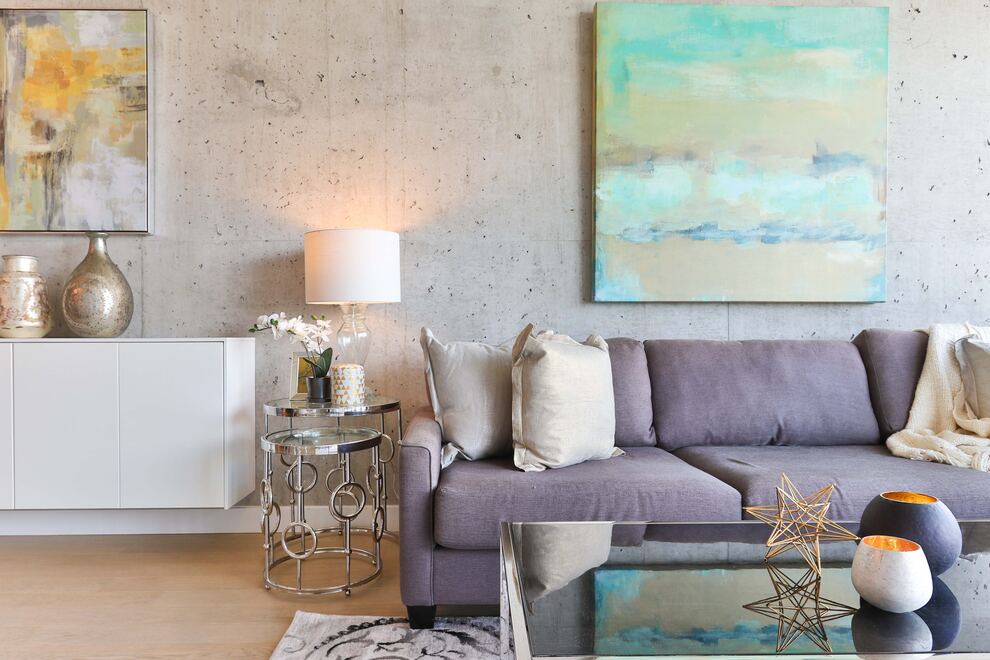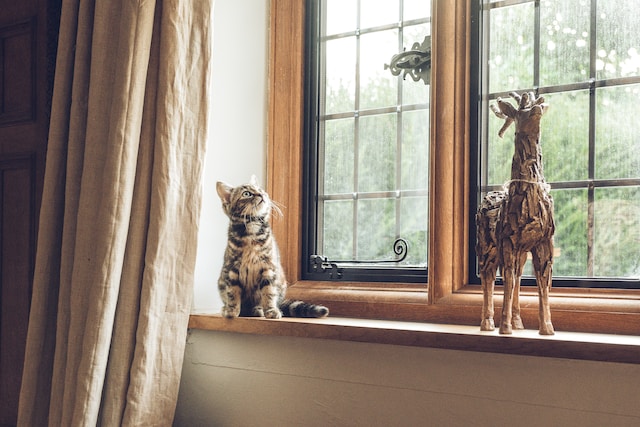Why is knitting such a popular pastime?
Many people wonder how to start knitting, but few actually stop to think about why knitting is such a popular hobby in the first place. While creating your own scarves, baby blankets, and garments is rewarding in and of itself, there are actually several health benefits related to knit crafts. Knitting can help to lower stress levels. The soothing, repetitive motion of making stitches can potentially even reduce low-level memory loss, too.
After you’ve become more familiar with the art of maneuvering needles and yarn to create stitches, you’ll need the right yarn room to take your knitting to the next level. Use the following DIY guide to design the ideal knitting space in your home.
Before you begin, gather your knitting supplies
Basic knitting supplies include needles and yarn. When deciding what kind of yarn and needles you’d like to use, your options are literally endless. You can opt for thin or thick yarn in virtually any color you prefer. You’ll also need to choose the right knitting needles to successfully make various knitting patterns. You can purchase all of these items online or at your local craft store.
How to create the knitting room of your dreams
A little imagination and resourcefulness are all it takes to transform any room in your home into your dream knitting space. Whether you enjoy your knit crafts on a comfy couch or in a spacious spare bedroom, use these DYI tips to transform your space into a creative oasis.
Make sure your space is comfortable
When you’re knitting for extended periods of time, make sure you add the right furniture to reduce back, neck, and shoulder pain. Consider purchasing an office chair or couch with lumbar support that’s designed to keep your spine aligned to its natural curvature.
Include extra room for friends
Nothing’s better than having other knitters over to enjoy your favorite hobby together. If you’re planning to host knitting clubs, include extra seating options for guests.
Encourage a calm, tranquil environment
If you use knitting as a tool to de-stress, you’ll find the hobby most enjoyable in a calm space that encourages relaxation. Add to the tranquil ambience of your knitting room by diffusing soothing essential oils like lavender, chamomile, or peppermint.
Design a space that stimulates imagination and creativity
Color plays a major role in the look and feel of a knitting room. Base your design scheme on a color that you love to encourage focused concentration within a stimulating environment. If you opt for multiple color shades, try to pick options that work together rather than clashing.
Use your knitting experience as a learning opportunity
Since knitting doesn’t require too much undivided attention, use your knitting sessions as a learning opportunity. You can watch documentaries about topics you’ve always been curious about or listen to audio books.
Create a noise-free zone
For maximum relaxation and concentration when you’re focusing on your knitting patterns, designate your knitting room as a noise-free zone. The last thing you need while you’re enjoying your knitting hobby is to be disturbed by the sound of the phone ringing.
Decorate to inspire
When decorating your yarn room, gain inspiration from your knitting supplies! Keep your beautiful yarns on display on open shelves or cabinets. Add plenty of green plants throughout the room to reduce stress, improve concentration, and encourage mental focus. Make a mood board so you can put swatches, inspiring magazine clips, and other items prominently displayed.
Organize your knitting supplies
Keep your knitting supplies neatly stored and organized to make sure each knitting session is as stress-free as possible. If you’re working on various knit crafts at a time, store the yarn and needles you’ll need for each project in its own basket for easy access. You can store additional supplies like buttons, zippers, and ribbons in old glass jars to add brilliant pops of color throughout your knitting space, too.
Simple knitting tips for beginners
If you’re thinking about taking up knitting as a hobby but don’t know where to begin, the good news is that anyone can knit. By learning a few basic knitting patterns and becoming more familiar with the most common knitting terms, beginners can quickly graduate to knitting masters in no time.
Most knit crafts basically boil down to practicing three essential skills:
- Cast on: Casting on is the process of getting the yarn onto the needle and transforming yarn into neat stitches.
- Knit stitch: After you’ve learned how to turn yarn into stitches by casting on, the knit stitch process turns your yarn into beautiful stitches.
- Cast off: Once you’ve used your needles to transform a loose bundle of yarn into a work of art, casting off gets your knitting off the needles to complete your project.
Where to get knitting tips
When you’re a beginner knitter, there are plenty of resources you can take advantage of to progress. Improve your skills and creativity by hosting or joining a knitting club. Knitting clubs offer an easy way for beginners to connect and practice their different knitting patterns within a fun social setting.
Your laptop can also be an essential piece of knitting equipment. Keep up with trends in your new hobby, get free knitting patterns, and connect with other knitters by becoming a member of a free online knitting group like Ravelry. A quick internet search can provide a wealth of information about knitting tips, too.
Also, consider investing in a few trusty reference books or magazines that make it easier to learn how to start knitting. Resources with step-by-step pictures and detailed information can go a long way in helping you through a sticky situation.
What knit crafts should you start with as a beginner?
Once you’ve become more comfortable with knit stitches and needles, you’re ready to start your first knit crafts. Here are a few DIY knitting tips to help you get started:
- Knit your first scarf
To knit your first scarf, begin by casting enough stitches that measure the width you’d like your scarf to be. Then, start knitting until you’ve reached your preferred length. Once you’ve finished, simply cast off.
- Knit your first hat
When you’re ready for the next challenge, knitting a hat will build on your skills. This project will teach you how to knit with double pointed needles, knit in the round, and create simple rib stitches.
- Knit your first blanket
Knitting a blanket requires a few basic knitting techniques: cast on and off, knit stitch, and weaving in ends. The number of stitches you cast on in the beginning will determine the blanket’s final width. Although you can use any type of yarn to knit your blanket, worsted yarn is a great weight to start with if you’re a beginner.
Think about the yarn material that will provide the feel you’re looking for, too. While wool is incredibly durable and warm, some types of wool have a scratchy feel. On the other hand, cotton yarn is easy to care for and super-soft, but it may not offer enough warmth. For those reasons, many knitters opt for a wool blend that delivers both the warmth of wool and the softness of cotton.
Make every knitting session a relaxing moment
The basic art of knitting engages the body and mind. Knitting can give you something fresh to think about after unwinding at the end of a long day. The rhythmic act of making simple, repetitive stitches can soothe a tired nervous system. In fact, knitting could have similar emotional, physical, and mental health benefits akin to restorative yoga.
Since knitting requires you to remain focused on the task at hand, it can be an effective method of releasing calmness. Make every knitting session a relaxing moment by returning your focus to your knitting patterns whenever you find your mind starting to stray a bit. This can help keep your mind off of stressors you’d rather avoid.
Other needlework hobbies:
1. Applique Needlework
This technique is done either by hand stitching or machine, in the knitting-sphere refers to art creation using different pieces or patches of fabric attached to another textile. It can be applied to all kinds of items, from garments to accessories to quilts.
2. Crocheting
Some people might be confused about the differences between crocheting and knitting, they are very similar after all, but there are key differences in these yarn needleworks. While knitting can be done with two needles using your hands or fingers only, crocheting is done with just one crochet hook, and the stitches resemble small knots. You can create very boho-chic items.
If what your heart desires is not creating clothes, Amigurumi patterns are adorable small, stuffed yarn creatures.
3. Bead Embroidery
You can also add embellishments to your needlework creations by embroidering beads into them. The possible outcomes and designs are endless; just use your imagination and add that extra touch your needlework needs.
4. Hand Embroidery
WIth hand embroidery, you can personalize and upcycle any fabric piece, from mantels to pillow-cases to your old jeans.
5. Needlepoint
For this one, you need a particular type of needle called tapestry needle and fabric with an open weave where the yarn will be stitched through the stiff open weave canvas.
As you can see, there are plenty of needlework techniques that involve yarn; no matter what your hobby of choice is, you can apply the same advice to organize and prepare your special creative oasis for needlework.
Share your knitting hobby with others
Learning how to start knitting can be a confidence booster. Throughout every stage of learning how to knit, share your journey with others. Help beginners develop the skills they need to take their knitting to the next level by sharing useful tips. Start a weekly knitting club where you can engage with others who have the same passion for knit crafts. Create unique gifts like scarves, baby blankets, and hats to gift friends and family members.
Whether you’re just starting out or knitting has been your go-to pastime for years, knitting is a highly rewarding craft with plenty of therapeutic benefits. Hopefully, the above guide will provide you with everything you need to know about designing a dedicated knitting space so you can enjoy your knit crafts even more than you already have.




